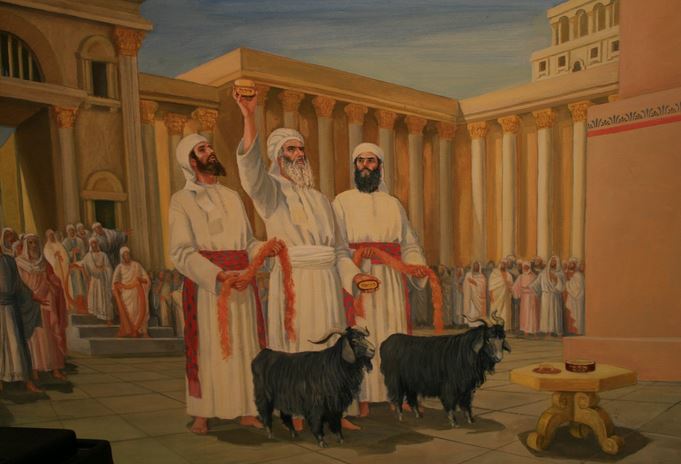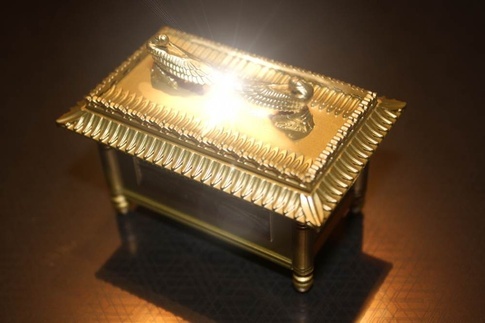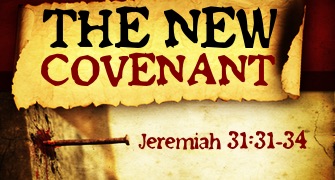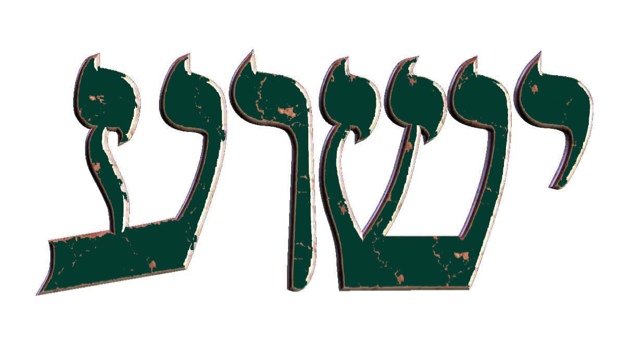Two of the greatest hindrances for the Jewish people to believe in Yeshua as the Messiah are the deity of Yeshua and His death on the cross. Most Jewish people that I talk with accept the reality of Yeshua as a first century rabbi who was an amazing teaching but they believe that He strayed from the “orthodox path.” In this week’s study I’d like to focus on the subject of the validity of the death of Yeshua as it pertains to the Jewish Scriptures. To read more about the subject of the deity of Yeshua, please read the following article; The Messiah and the Jewish People
I was talking to a friend of mine just the other day who is a Gentile but she has many friends who would be considered orthodox Jews. She was telling me about one of her Jewish friends in particular who is open to discussing the person of Yeshua but this whole issue of His sacrifice just doesn’t make sense to her. Why did Yeshua have to die on the cross and become a sacrifice?
The Perspective of Judaism
Judaism today teaches that the path to attaining righteousness is through living a “Torah life,” meaning to keep the commandments in all of their complexity. The sacrificial system, which is found in the Torah, is given minimal significance in Judaism and it is only taught as one of the ways to draw closer to God. After the Temple was destroyed in 70 AD, the sacrificial system ceased and a systematic prayer life has taken its place. In support of this system of maintaining a relationship with God through prayer is a verse from the prophets which speaks of the sins of the people being forgiven by the offering of their lips (Hosea 14:1-2). In other words, prayers have taken the place of sacrificial offerings. The former Chief Rabbi of Israel summarized this position well with these words:
Thus when the sacrificial system was forcibly terminated with the destruction of the Temple, the prayers took on additional significance as a substitute for the sacrifices, for they too serve the purpose of creating a direct contact between man and God without any intermediaries. – Rabbi Israel Meir Lau, Practical Judaism. Modern Publishing, 1997. p. 48
Are our prayers really sufficient to create direct contact with God without any intermediary? Does God demand a blood sacrifice in order for us to be cleansed from sin or not? Do the Torah and the Prophets really support the need for a sacrifice for the atonement of sins or is this only a Christian invention? I believe we find the answers to all of these questions in this week’s Torah Portion.
Watch this brief summary video of this week’s article!
Acharei Mot
This week’s Torah Portion has an unusual name, “אחרי מות” – “Acharei Mot,” which means “After the Death.” This phrase is found in the first verse of this week’s Torah Portion:
Now the LORD spoke to Moses after the death of the two sons of Aaron, when they had approached the presence of the LORD and died. – Lev. 16:1
The timing and context of Leviticus chapter 16 are summed up in this phrase, “after the death,” referring to the death of Aaron’s two sons who were struck down by God when they offered strange fire in the presence of the LORD (Lev. 10:1-3).
Aaron’s two sons, Nadav and Avihu, had attempted to draw near to the LORD in a manner which God had not prescribed. As a result of their actions they were immediately killed. In the context of this example of inappropriate priestly behavior, the LORD provided instructions regarding how the high priest, which at that time was Aaron, was to approach the presence of the LORD in the Holy of Holies:
The LORD said to Moses: “Tell your brother Aaron that he shall not enter at any time into the holy place inside the veil, before the mercy seat which is on the ark, or he will die; for I will appear in the cloud over the mercy seat.” – Lev. 16:2
The LORD is holy, He must be approached in a holy manner, and He can only be approached according to His commands and decrees.
The Place of God
The LORD clearly commanded that Aaron, the high priest, should not enter the holy of holies inside the Tabernacle whenever he desired. The reason given for this is that the LORD Himself would appear in a cloud in the holy of holies, in the place above the “mercy seat.” The high priest was permitted to enter into the holy of holies one day per year, on the Day of Atonement. The remainder of Leviticus 16 deals with instructions regarding how to observe the Day of Atonement (Lev. 16:3-34).
The Day of Atonement
In brief, on the Day of Atonement the high priest was to take a bull as a sacrifice for a sin offering and a ram for a burnt offering. The sin offering was for the atonement for the sins of the priest and the sins of his family (Lev. 16:11). The high priest was then to take the blood of the bull and go into the holy place. He was also to take incense with him and a censer and take fire from the altar of incense which was in front of the curtain that separated the holy place from the holy of holies.
The high priest was to enter into the holy of holies with the blood, the fire, and the incense and put the incense on the fire so that the cloud covered the “mercy seat” so that he would not die (Lev. 16:12-13). He was then to take some of the blood from the bull and sprinkle it on the east side of the “mercy seat” and then he was to sprinkle the blood seven times in front of the “mercy seat” (Lev. 16:14).
Atoning for the Sins of the Nation
After atoning for his own sins and the sins of his family, the high priest was to make atonement for the sins of the nation of Israel. The high priest was to take two goats from the people of Israel and offer one goat as a sacrifice. He was then to take the blood of the goat into the holy of holies and perform the same ritual as he did with the blood of the bull by sprinkling blood on and in front of the “mercy seat.” He was also to take some of the blood of the bull together with the blood of the goat and put the blood on the horns of the altar of incense and on all of its sides. He was then to sprinkle the blood on the altar seven times to cleanse it and to make atonement for it (Lev. 16:15-19).
The high priest was then to lay his hands on the head of the live goat and place upon it all of the sins of the people of Israel. The live goat was then led into the wilderness to bear the sins of the nation of Israel (Lev. 16:20-22).

Atonement and Cleansing from Sin
The Day of Atonement was a national day of cleansing from sin. It was a permanent ordinance from the LORD that was to be continually observed year by year:
This shall be a permanent statute for you: in the seventh month, on the tenth day of the month, you shall humble your souls and not do any work, whether the native, or the alien who sojourns among you; for it is on this day that atonement shall be made for you to cleanse you; you will be clean from all your sins before the LORD. It is to be a sabbath of solemn rest for you, that you may humble your souls; it is a permanent statute. – Lev. 16:29-31
The Day of Atonement was to be observed by everyone who was part of the people of Israel, the native and the alien alike. It was to be a day of atonement and complete cleansing from sin. Atonement was made by means of the sacrifices and the blood that was brought into the holy of holies, sprinkled on the “mercy seat,” and applied to the altar of incense.
The “Mercy Seat”
The place where God’s presence dwelt in the holy of holies and the place where atonement was made was above the ark cover which is often called the “mercy seat” in English. The Hebrew word used for “mercy seat” is “הכפורת” – “ha’kaporet,” which means “the atonement” or “the covering.” We see this word used in both ways in the Torah.
When Noah was building the ark, God instructed him to “cover” the ark with tar (Gen. 6:14). The word used for cover in this verse is the word “כפר” – “kafar.” When the LORD instructed Moses regarding building the Ark of the Covenant, He also gave to Moses the exact dimensions of the “כפורת” – “kaporet,” which was something to be placed on top of the Ark of the Covenant. The “כפורת” – “kaporet” was clearly something which covered the ark (Ex. 25:17-22). (As a side note, the “Ark of the Covenant” and the Ark of Noah have nothing in common with one another. In English it is the same word, “ark,” but in Hebrew it is two different words.)
The Place of Atonement
The phrase “mercy seat” is an interpretive translation of the “cover” for the Ark of the Covenant. The root meaning of the Hebrew word “כפורת” – “kaporet” clearly means “a covering” but it is also connected to “atonement,” which we see in the Hebrew root. The word for the ark cover is “כפורת” – “kaporet” and the word for atonement is “לכפר” – “lekaper.” The Hebrew root for both of these words is “כפר” – “kafar” which means “to cover” or “to atone.” A form of the word “כפר” – “kafar” appears 17 times in Leviticus chapter 16 and the connection is clear regarding the act of making atonement and the place where atonement is made, over the Ark of the Covenant and above the “כפורת” – “kaporet.” The place of atonement is the place where God’s presence and the blood of the sacrifice meet.

The Place of Meeting with the LORD
When the LORD gave Moses instructions regarding how to build the Ark of the Covenant and the atonement cover (the mercy seat), the LORD told Moses that He would meet with him there:
You shall put the mercy seat on top of the ark, and in the ark you shall put the testimony which I will give to you. There I will meet with you; and from above the mercy seat, from between the two cherubim which are upon the ark of the testimony, I will speak to you about all that I will give you in commandment for the sons of Israel. – Ex. 25:21-22
It was from the place above the “mercy seat” – “the atonement cover” that the LORD would meet with Moses and speak to him.
The place of atonement is a place of meeting between God and man. When the LORD told Moses that He would meet with him at the place above the atonement cover, He used the Hebrew phrase, “ונועדתי לך שם ודברתי אתך” – “ve’no’ad’ti lecha sham ve’dibarti eitcha” – “And I will meet with you there and I will speak to you.” It was here at the place above the atonement cover, where all of the sins of the nations of Israel were atoned for, that God chose to meet and speak with Moses. We see almost identical wording of God meeting and speaking with His people a few chapters later in the book of Exodus.
The Continual Burnt Offering – The Other Meeting Place
When the LORD instructed Moses regarding the priesthood, He instituted the continual burnt offering (Ex. 29:38-41), which required a lamb to be sacrificed on the altar every morning and every evening, forever:
It shall be a continual burnt offering throughout your generations at the doorway of the tent of meeting before the LORD, where I will meet with you, to speak to you there. I will meet there with the sons of Israel, and it shall be consecrated by My glory. – Ex. 29:42-43
The LORD instituted a continual burnt offering morning and evening and it was through these continual sacrifices that the LORD would meet with and speak to Moses and the children of Israel. We see almost identical wording in the Hebrew in Exodus 29 from what we read in Exodus 25 regarding the LORD meeting with and speaking with Moses, however, here in Exodus 29 we also read how the LORD would meet with the children of Israel at this place as well.
Through both the continual burnt offerings and the yearly offerings on the Day of Atonement the LORD made a way to meet with His people and to speak with them. It was only through the sacrifice of animals that God provided atonement for the sins of His people. It was only through sacrifice that God could meet and speak to His people. This is God’s standard in the Torah and it should not surprise us that this is His standard in the New Covenant as well.
God’s Provision of Salvation
The Torah, Prophets, and the Writings are filled with Scriptures that speak of the inability of man to save himself from his spiritual state of uncleanness and how God Himself must provide a way. The prophet Isaiah provides a fitting example of this:
Now the LORD saw, and it was displeasing in His sight that there was no justice. And He saw that there was no man, and was astonished that there was no one to intercede; Then His own arm brought salvation to Him, and His righteousness upheld Him. – Isaiah 59:15-16
The LORD Himself makes provision for salvation and righteousness. It is the LORD alone who can redeem us to Himself:
“A Redeemer will come to Zion, and to those who turn from transgression in Jacob,” declares the LORD. – Isaiah 59:20
The LORD Himself is the Redeemer of Israel. The LORD alone is able to deliver His people from sin and transgression. This is true from the Garden of Eden until today.

Establishing the New Covenant
In order to provide complete redemption and forgiveness of sin the LORD foretold through the prophet Jeremiah that He would establish a New Covenant with His people:
“Behold, days are coming,” declares the LORD, “when I will make a new covenant with the house of Israel and with the house of Judah,” – Jer. 31:31
The New Covenant is God’s plan to provide complete forgiveness of sin and to establish eternal relationship with Him (Jer. 31:31-34).
New Covenant Cleansing from Sin
In keeping with God’s nature to meet with His people at the place of sacrifice and atonement, it should not surprise us that God has chosen a final, complete sacrifice to establish His New Covenant with His people through a priest whose service never ends. In the letter to the Hebrews in the New Testament is the following explanation of Yeshua’s unique role as a permanent priest:
The former priests, on the one hand, existed in greater numbers because they were prevented by death from continuing, but Yeshua, on the other hand, because He continues forever, holds His priesthood permanently. Therefore He is able also to save forever those who draw near to God through Him, since He always lives to make intercession for them. – Hebrews 7:23-25
Yeshua, the Son of God, has done what no earthly priest could do. Yeshua, being holy and righteous, offered himself as the final sacrifice, providing a sacrifice once for all and brought an end to the old order of atonement for sin (Heb. 8:13). The Hebrew word “ישוע” – “Yeshua” means “salvation!”

The death and sacrifice of the Messiah fit perfectly into the plan of God to provide atonement for His people and to open the door for people of all nations to experience forgiveness of sins:
In this is love, not that we loved God, but that He loved us and sent His Son to be the propitiation for our sins. – 1 John 4:10
Just as God loved Abraham, Isaac, Jacob, and the whole nation of Israel enough to provide atonement through the sacrificial system, He has demonstrated His love in an even greater manner by sending His own Son to be the “קורבן תמיד” – “korban tamid” – “The forever sacrifice” providing atonement for our sins. The place of God’s atonement today is in His Son, Yeshua!
Shabbat Shalom!
If you enjoyed reading this article, share it today with friends! We also invite you to sign up for our weekly Torah Portion commentary on the sidebar to the right.
Help keep our weekly commentaries free and available to all. Click here to donate today:
Torah Portion: Lev. 16:1 – Lev. 18:30
Hafatara: Ezekiel 22:1-19
Return to Torah Portion Homepage
Copyright Jewels of Judaism. All rights reserved 2016



Thank you
The hebrew roots are very beautiful. The connection between different word with the same root given by hebrew language , God’s language gives a deep understanding of those words. Like thuis time to cover and to atone. Or to worship and to confess as you taught us before.
Thank you!!!
Amen! Yeshua, the forever sacrifice, the forever atonement!
Thanks for your clear explanation!
My pleasure!
Daniel